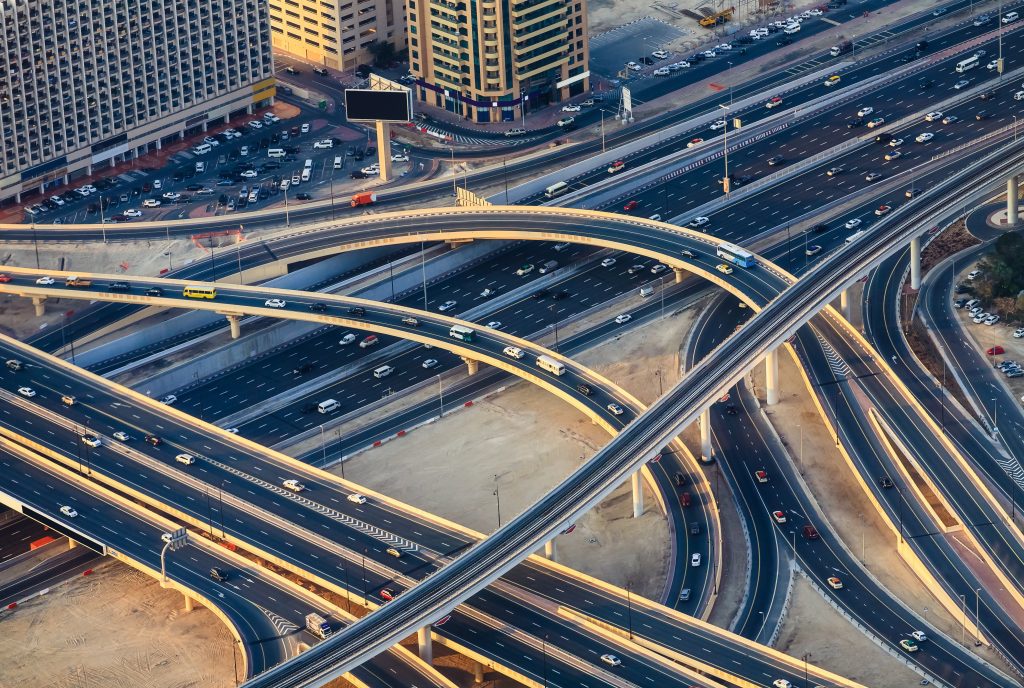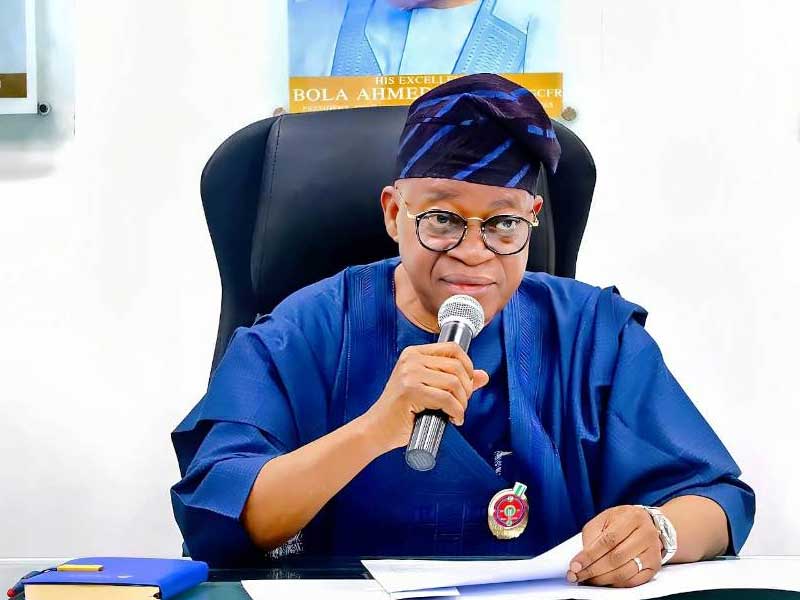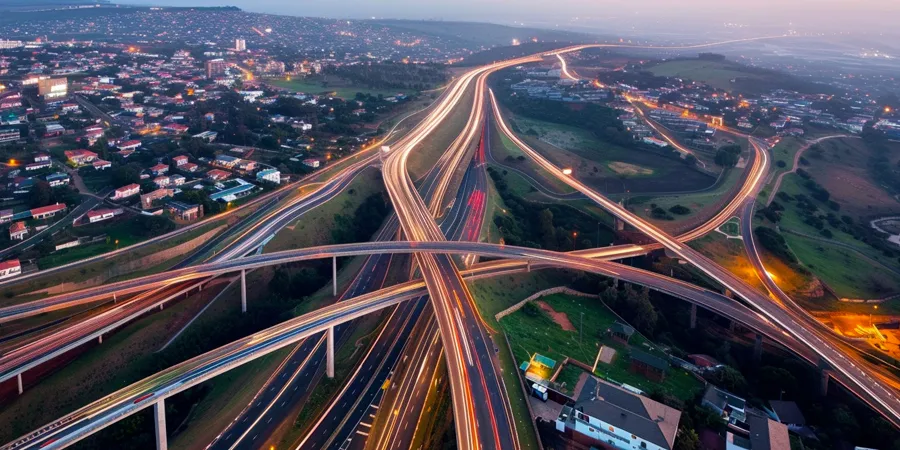Transport networks form the backbone of economic growth and social connectivity. In Africa, where cities are expanding rapidly and trade corridors are developing, the demand for modern and efficient transport infrastructure is urgent. Without these systems, goods move slowly, costs rise, and opportunities fade. When transport systems function effectively, they unlock jobs, markets, and business growth.
Across the continent, new roads, railways, ports, and logistics hubs are being planned and built. These projects are not just upgrades of older systems. They represent a shift toward modern transport infrastructure Africa, designed to be resilient, intelligent, and sustainable.
This article explores what modern transport infrastructure means today, why it matters in Africa, and how private-sector leadership is driving progress. Later, we will highlight how the Chagoury Group is contributing to this transformation through long-term investments in construction and transport systems.
What Is Modern Transport Infrastructure?
Before exploring the challenges and opportunities that shape Africa’s infrastructure, it’s important to understand what the term modern transport infrastructure really means and how it supports economic and social development across the continent.
Understanding the Concept of Transport Infrastructure
Transport infrastructure includes the physical systems that move people and goods: roads, bridges, railways, ports, airports, and logistics centers. These networks connect producers with consumers, link rural regions with cities, and support economic expansion.
The word modern describes infrastructure that is efficient, digitally connected, and climate-resilient. For instance, a modern highway is more than pavement and lanes. It may include smart traffic systems, electronic tolling, and future provisions for electric vehicles.
When discussing modern transport infrastructure Africa, the focus is on regional connectivity, use of technology for management, and construction that supports long-term economic and environmental goals.
Key Components and Criteria
Several criteria can evaluate modern transport infrastructure:
- Capacity and connectivity: Does it handle current and future demand while linking major production and population centers?
- Efficiency and speed: Are travel and freight times optimized, and are logistics smooth?
- Resilience and adaptability: Can infrastructure withstand weather, climate shocks, and evolving needs?
- Technology and automation: Are there digital systems that improve safety, traffic management, and maintenance?
- Sustainability and long-term value: Are materials, design, and operations energy-efficient and environmentally responsible?
Together, these factors define the foundation of modern transport infrastructure Africa and its role in driving inclusive and sustainable growth.
Why Modern Transport Infrastructure Matters in Africa

Africa’s development depends on the ability to move goods and people quickly and affordably. Yet, the continent still struggles with insufficient transport networks and maintenance issues. Modernizing these systems can change that reality, driving faster economic growth and regional cooperation.
Economic Growth and Trade Competitiveness
A reliable transport system lowers shipping times, improves logistics, and attracts global investors. The World Bank estimates that poor infrastructure reduces productivity across Africa by up to 40 percent. Efficient networks do the opposite. They expand exports, strengthen industries, and open new opportunities for trade.
Projects like the African Continental Free Trade Area (AfCFTA) depend on modern infrastructure to connect member states. Without reliable roads, rails, and ports, trade integration remains limited. The African transport and logistics sector is projected to grow at 6 to 8 percent annually from 2025 to 2040, supported by infrastructure investments and private partnerships (Big 5 Construct Africa).
Social and Regional Integration Benefits
Transport infrastructure is also a social enabler. It connects communities with jobs, schools, and healthcare. In rural areas, new roads help farmers reach city markets faster. In urban zones, improved public transport reduces congestion and improves the quality of life.
Large corridor projects in East and West Africa now connect landlocked nations to ports, allowing more consistent trade flow and lower shipping costs. These connections help unify regional economies and foster collaboration among neighboring countries.
Bridging the Infrastructure Gap
The infrastructure gap in Africa remains substantial. Around 73 percent of the total deficit lies in transport infrastructure (AVCA Report 2025). Public funding alone cannot close this gap. It requires efficient partnerships, improved governance, and private-sector participation.
Modern transport infrastructure Africa is the key to unlocking the continent’s economic potential while reducing inequality and environmental strain.
Key Modes and Best Practices for Transport Infrastructure

To understand what modernization looks like in practice, it helps to review Africa’s major transport modes and the principles guiding their improvement. Each sector contributes uniquely to growth and connectivity.
Road Networks and Smart Highways
Roads carry about 80 percent of Africa’s goods and passengers, yet many remain unpaved or poorly maintained. The focus of modern road design is on durability, technology, and connectivity.
Key strategies include:
- Using climate-resilient materials that withstand temperature changes and rainfall.
- Applying smart technologies like electronic tolls and traffic sensors.
- Building highways that connect regional trade corridors and industrial zones.
Digital traffic management systems now help governments track usage and schedule maintenance efficiently.
Rail Systems and Logistics Corridors
Rail networks are essential for moving heavy cargo efficiently and reducing road congestion. New lines such as the Addis Ababa–Djibouti Railway and the Standard Gauge Railway in Kenya show how modern railways cut costs and strengthen export supply chains.
Best practices include:
- Electrifying lines to reduce emissions.
- Introducing smart signaling systems for safety and speed.
- Coordinating rail and port operations for smooth freight transfers.
- Implementing reliable maintenance programs for long-term performance.
Modern rail systems can transform landlocked economies into active trade participants.
Ports, Maritime Logistics, and Air Hubs
Ports are Africa’s trade lifelines. Modernisation efforts in Lagos, Abidjan, and Durban are improving efficiency and capacity. The Nigerian government’s US$1 billion port upgrade, awarded to ITB Nigeria, a subsidiary of the Chagoury Group, exemplifies this progress (ThisDayLive).
Modern port practices include:
- Digital customs processing for faster clearance.
- Energy-efficient cranes and eco-friendly lighting systems.
- Expanded container terminals for regional logistics growth.
Airports and multimodal hubs are also adopting automation and digital cargo tracking, helping streamline Africa’s logistics networks.
Emerging Trends and Private Sector Leadership

The pace of change in African infrastructure is accelerating. Governments are relying more on private investment and technical expertise to achieve their national development goals. This collaboration is transforming how large projects are planned and delivered.
Technology and Digital Transformation
Innovation is reshaping every aspect of transport management. From smart highways to automated ports, digital tools improve efficiency and accountability.
Examples include:
- IoT sensors that track cargo in real time.
- Automated tolling and e-ticketing that reduce human error and waiting time.
- Geospatial mapping and drones for better infrastructure planning.
Digital transformation ensures transparency and reduces operational costs across all sectors of modern transport infrastructure Africa.
Green and Climate-Resilient Design
Climate change is forcing a rethink of construction methods. Builders are now prioritizing sustainability through renewable energy, eco-materials, and efficient design.
Common approaches include:
- Low-carbon concrete and recycled asphalt.
- Solar lighting for highways and terminals.
- Rainwater harvesting and advanced drainage systems.
The World Bank emphasizes that resilient infrastructure is essential for protecting cities from floods and heatwaves (World Bank).
Private Sector Leadership and Investment
Private companies are taking a lead role in large-scale projects. The Chagoury Group, through subsidiaries like ITB Nigeria, demonstrates how corporate investment accelerates progress. Their port modernization work in Lagos is improving logistics efficiency and trade competitiveness.
Investors are also turning to green bonds and infrastructure funds that align profit with sustainability. These models make it possible to build infrastructure that is financially sound and environmentally responsible.
Spotlight on the Chagoury Group’s Role in Modernising African Transport
After reviewing regional trends, it becomes clear that progress depends on companies willing to lead by example. The Chagoury Group continues to be one of those leaders, blending innovation, technical expertise, and social commitment.
Modernising Nigeria’s Port Infrastructure

The Nigerian Port Modernisation Programme reflects this leadership. Valued at over US $1 billion, the project upgrades the Apapa and Tin Can Island ports in Lagos. Managed by ITB Nigeria, it introduces digital logistics, increases capacity, and cuts vessel turnaround time (ThisDayLive).
Key improvements include:
- Paperless customs operations using digital tracking.
- Smart scheduling systems to reduce waiting times.
- Modern cargo terminals that meet international standards.
This initiative captures the meaning of modern transport infrastructure Africa by combining technology, sustainability, and efficiency.
Innovation and Long-Term Vision
The Chagoury Group integrates sustainability into every stage of project planning. Their focus on renewable power, efficient materials, and advanced engineering ensures that infrastructure remains durable and environmentally balanced.
By building with the future in mind, the company supports both economic and climate resilience goals across Africa.
Public-Private Partnership for Development
Partnerships between governments and companies like the Chagoury Group are redefining African development. These collaborations combine public accountability with private innovation, ensuring that infrastructure projects deliver long-term value.
Each successful project strengthens regional logistics, creates local jobs, and inspires confidence in Africa’s capacity to lead its own sustainable transformation.
Building the Future: A Path Toward Connected Africa

Africa’s future depends on its ability to connect. Roads, railways, and ports are the pathways to prosperity, and modern transport infrastructure Africa is the bridge between today’s challenges and tomorrow’s growth.
The encouraging news is that this transformation has already begun. Governments are investing, private companies are innovating, and partnerships are creating smart and sustainable networks. The Lagos Port modernization, led by ITB Nigeria and the Chagoury Group, is one of many examples proving that progress is possible.
For Gilbert Chagoury and the Chagoury Group, infrastructure is more than construction; it is a commitment to long-term development. Through smart engineering, sustainability, and partnership, the company continues to help shape a connected and resilient Africa. To learn more about current projects or to collaborate on future initiatives, visit our Contact page and join us in building the foundation for Africa’s sustainable future.
